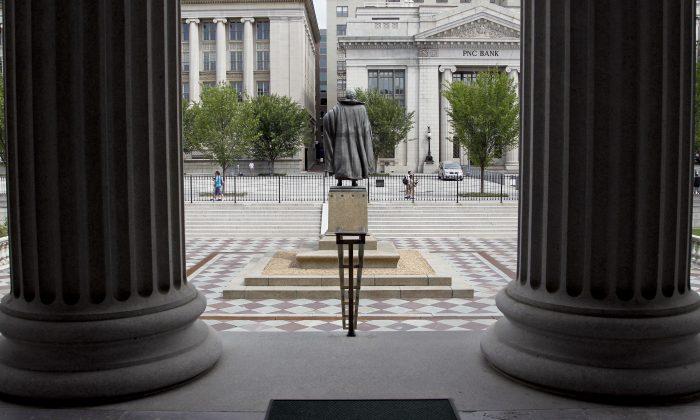U.S. Treasury 10-year yield rates hit above the 2 percent benchmark on Feb. 10, after key inflation data showed larger than expected price pressures, causing the Dow to crater, losing over 500 points.
The yield on 10-year Treasury note jumped 12 basis points to about 2.05 percent, the first time since August 2019 when it last hit above the benchmark rate.
The benchmark Treasury yield rapidly skyrocketed since the beginning of 2022, rising almost 50 basis points from 1.51 percent at the end of last December.
The 10-year rate has since gained about 20 basis points from the end of January when it was at 1.78 percent.
Meanwhile, the yield on the 2-year Treasury bond, surged 26 basis points to top 1.6 percent, with the surge marking the 2-year’s biggest single day move since 2009.
The 2-year rate is the most sensitive to Federal Reserve policy regarding interest rates.
The spread between 2 and 10-year rates has flattened to a level not seen since 2020.
The yield on the 30-year Treasury bond stood at 2.308 percent, up 7.6 basis points from 2.232 percent on Feb. 3, the highest level since May 21, 2021.
Auctions are scheduled to be held for $50 billion of 4-week bills, $40 billion of 8-week bills, and $23 billion of 30-year bonds.
The accelerated inflation rate is the highest reading since February 1982.
Consumer inflation minus volatile food and energy prices rose 0.6 percent, the second time since December.
Meanwhile, the core consumer rate over the past 12 months rose to 6 percent from 5.5 percent, the highest level since August 1982.
The Labor Department reported that last week’s initial jobless claims were down 223,000 from 238,000 the previous week, lower than Dow Jones’s estimate of 230,000.
Continuing claims, which track the total number of unemployed workers collecting benefits, were at 1.62 million, still below pre-pandemic levels.
Futures traders at the Chicago Mercantile Exchange (CME) predict a a 50-basis-point increase and have raised the likelihood of a half percentage point increase in the benchmark interest rate by the Federal Reserve in March.
Those predictions appear likely after St. Louis Fed President James Bullard told Bloomberg News that he supported lifting rates by a full percentage point by July 1 and was open to a 50-basis point hike in March, just before a $23 billion 30-year bond auction.
Yields pushed higher on the trading floor after Bullard’s statement, as his comments combined with rapidly rising inflation rates pushed traders to price in a faster pace of Fed interest hikes.
Analysts anticipate a strong chance that the Fed will hike rates seven times this year, which would entail a move at every Fed meeting through the end of 2022.
The Dow Jones Industrial Average fell 526.47 points, around 1.5 percent, while the S&P 500 and Nasdaq fell 1.8 percent and 2.1 percent, respectively.





